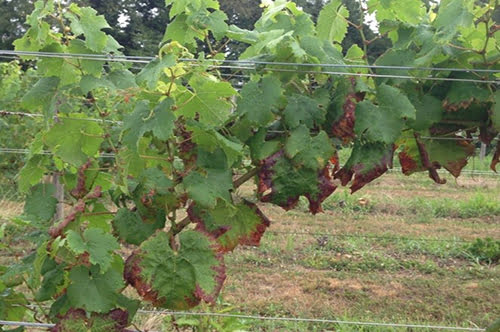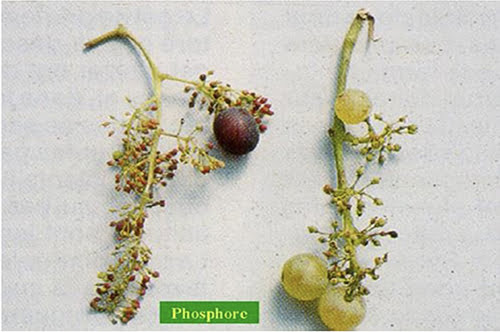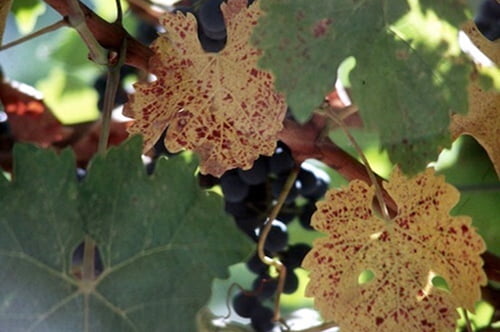Grape Cultivation
Products
kg/Da
Super Economic Proposal
Products
kg/Da
What if grape is not fed sufficiently?
If grape cannot get sufficient nutrients from the soil during its growth, it may show the following signals.
Potassium (K) deficiency:
Potassium plays an important role in completing the processes that make up the quality of the plant. Lack of potassium in grape manifests itself in the leaves, causing it to acquire a dark red color and to the leaves curl down. The plant shows signs of leaf deficiency, such as stunted growth, low yield and weakness.
Phosphorus (P) deficiency:
Phosphorus is necessary for genetic transfer in plants, transportation of nutrients and energy production. Phosphorus deficiency indicates a very distinctive symptom that makes the leaves appear dark green and to have red dots along the lobes. Over time, the spots make a right angle to each other and will form dark red bars between the veins. Phosphorus deficiency in grapevine significantly reduces seed and fruit productivity, which results in inefficiency.
Magnesium (Mg) deficiency:
Magnesium is one of the basic ingredients of chlorophyll, which gives plants its green color and is used by the plant to convert sunlight into energy through photosynthesis. Magnesium deficiency slows down the process of photosynthesis, which is necessary for plants to survive. Magnesium deficiency is manifested by yellowing of the leaves. Magnesium which is essential for plant growth and vitality, causes dryness and shrinkage in the crop when it is not adequately absorbed by the plant.







